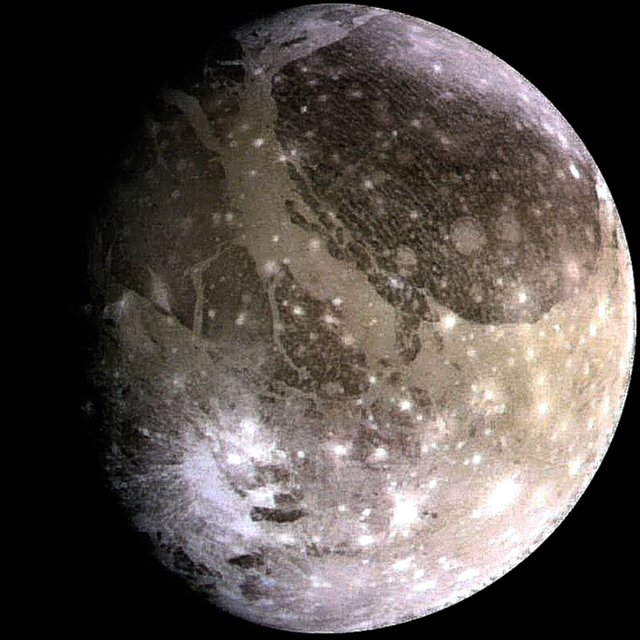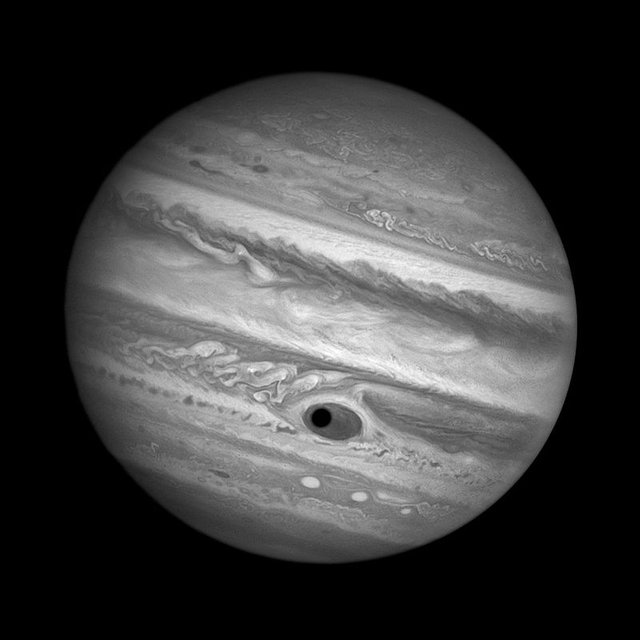Ganymede: Jupiter's Satellite

Image of Ganymede's. Image source: [1]
Jupiter, the largest planet in our solar system is surrounded by more than 60 moons. The moons of Jupiter were first discovered in 1610 by Galileo Galilei and Simon Marius, who named him in honor of Ganymede, the prince of Troy of great beauty, abducted by Zeus the eagle, while he was tending his flock in the Mount (Ida) in Troas.
Ganymede is the largest of the moons of Jupiter and is the largest of our solar system with a diameter of 5,262 km. If Ganymede orbits around the sun rather than around Jupiter, it could be classified as a planet. Like Callisto, Ganymede is probably composed of a rocky core with a mantle of water, ice and a rock crust. Its low density of 1.94 gm/cm^3, indicates that the nucleus occupies about 50% of the diameter of the satellite. The mantle of Ganymede is probably composed of ice and silicates, and its bark is a thick layer of frozen water.
The Hubble telescope was used to observe the auroras in Ganymede, a phenomenon linked to the magnetic field of the satellite. Because telescopes can not see what is inside the planets, satellites or any celestial object, tracking the magnetic field through the auroras indirectly allows them to find out what is inside. In addition to having its own magnetic field, when orbiting very close to Jupiter, Ganymede is also influenced by the magnetic field of that giant planet.
More details here: Ganymede

Jupiter's Great Red Spot and Ganymede's shadow. Image source: [2]
